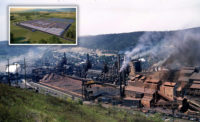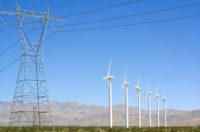Crews from the U.S. Energy Dept and Bechtel National that built and are now commissioning the multi-billion-dollar radioactive waste treatment plant at the federal Hanford nuclear cleanup site in Washington state successfully poured molten test glass for the first time that will mix with nuclear and chemical wastes in two large melters.
More than 56 million gallons of the wastes stored underground at the former nuclear weapons site—some for more than 80 years and in tanks at risk for continued leakage—are set to be turned into stable vitrified glass, under current plans in place since 2000.
The plant now is commissioning the first of the two 300-ton melters—the largest of their kind—after it was successfully heated in July to 2,100°F, following a failed attempt last year
The first batch of about 30,000 lb of molten glass beads, called frit, in September was poured into the first test steel container adjacent to the melter at the plant’s low-level waste treatment facility—with more added over successive weeks, Bechtel officials said.
About 90% of Hanford's nuclear waste is set to be treated at this facility.
The pour was monitored by workers from a facility control room, DOE said.
Bechtel said that the second melter would be heated up early in 2024, with lessons learned from the first melter being integrated.
Commissioning using simulated waste is set to happen during the year, with so-called "hot" commissioning using actual waste beginning in early 2025.
“With this first container of glass produced, we are entering the next era of risk reduction in the Hanford environmental cleanup mission as we work towards the start of tank waste immobilization,” said Brian Vance, DOE Hanford site manager, in a statement.
But with estimates emerging of significantly higher overall plant treatment costs, and still unclear technical approaches to clean up high-level waste, debate is rising over the future course and cost of the program—with the US Government Accountability Office this summer recommending that DOE plan for "expedited alternatives" to some of its current strategies.







Post a comment to this article
Report Abusive Comment